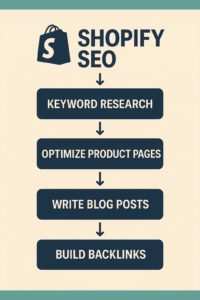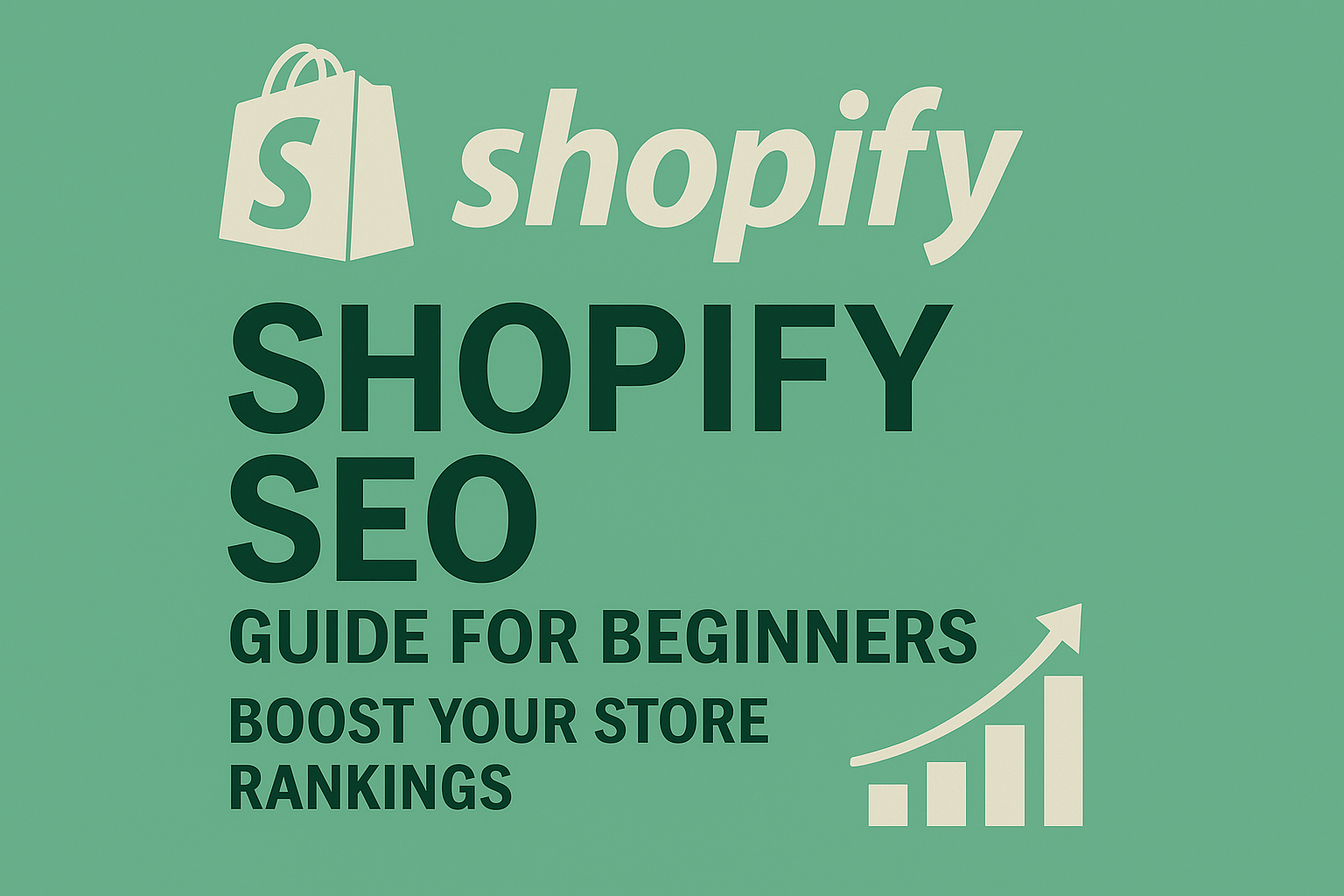Why SEO Matters for Your Shopify Store
SEO (Search Engine Optimization) helps your Shopify store appear higher in search engine results, making it easier for customers to find you. For example, if you sell eco-friendly candles, ranking for “eco-friendly candles online” can bring targeted traffic to your store. Shopify reports that 70% of its merchants rely on organic search for traffic, making SEO a critical skill for e-commerce success.
Step-by-Step Shopify SEO Guide for Beginners
Step 1: Research Keywords for Your Store
- Use a free tool like Google Keyword Planner to find keywords your customers might search (e.g., “handmade candles,” “eco-friendly gifts”).
- Look for keywords with decent search volume (500–2,000 searches/month) and low competition.
- Create a list of 5–10 keywords to target (e.g., “buy handmade candles online”).

Step 2: Optimize Your Shopify Homepage
- Navigate to Online Store > Preferences in your Shopify dashboard.
- Add your primary keyword to the homepage title (e.g., “Handmade Candles – Eco-Friendly Gifts | MyStore”).
- Write a meta description (150–160 characters) with your keyword (e.g., “Discover handmade candles and eco-friendly gifts at MyStore. Shop now for sustainable products!”).
- Include your keyword in the homepage content (e.g., in a welcome message).
Step 3: Improve Product Page SEO
- For each product, access Products and edit the title to include keywords (e.g., “Handmade Lavender Candle – Eco-Friendly”).
- Write detailed descriptions (300–500 words) with keywords naturally included.
- Add alt text to product images (e.g., “handmade lavender candle on wooden table”).
- Use Shopify’s “Search engine listing preview” to optimize the meta description.
Step 4: Create Collections for Better Navigation
- Access Products > Collections and create categories (e.g., “Eco-Friendly Candles,” “Gift Sets”).
- Add keywords to collection titles and descriptions (e.g., “Explore our Eco-Friendly Candles collection…”).
- Link collections in your store’s navigation menu for better user experience.
Step 5: Speed Up Your Shopify Store
- Navigate to Online Store > Themes and ensure your theme is lightweight (e.g., Dawn).
- Use Shopify’s built-in image optimization or compress images before uploading.
- Consider installing a speed optimization app like Booster SEO to improve load times.
Step 6: Submit Your Sitemap to Google
- Find your Shopify sitemap at yourdomain.com/sitemap.xml.
- Sign into Google Search Console, go to “Sitemaps,” and submit the URL.
- This helps Google index your store faster, improving your rankings.
Additional Shopify SEO Tips
- Start a Blog: Shopify’s blog feature lets you create content like “Top 5 Eco-Friendly Candle Ideas,” targeting keywords to drive traffic.
- Use Redirects: If you change product URLs, set up 301 redirects in Online Store > Navigation to avoid broken links.
- Monitor Performance: Check out our guide on How to Use Shopify Analytics to Grow Your Store to track your SEO progress.
What’s Next?
You’ve taken the first steps to improve your Shopify store’s SEO—great work! Next, explore advanced strategies like voice search optimization (see our guide on Optimize Your Shopify Store for Voice Search) or dive into Shopify apps to enhance functionality. Stay tuned to BlogHush.com for more e-commerce tips!

Leave a Reply